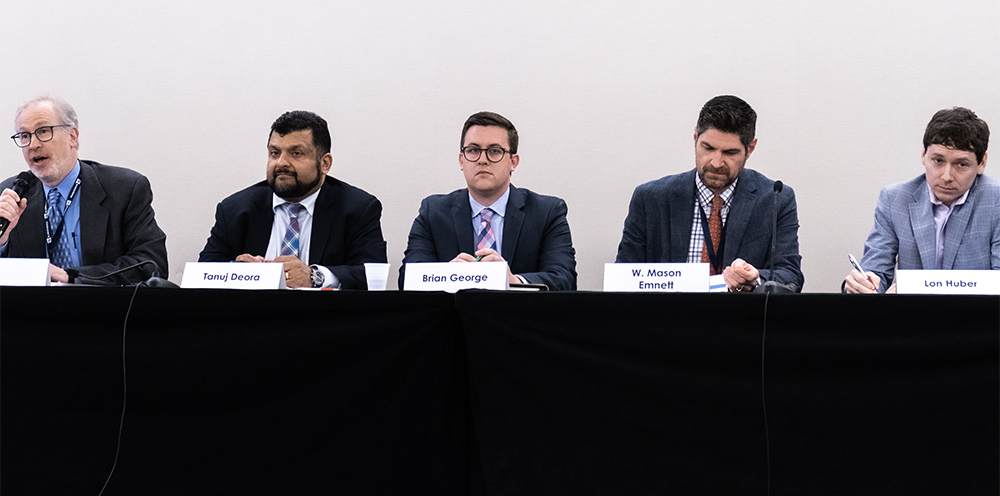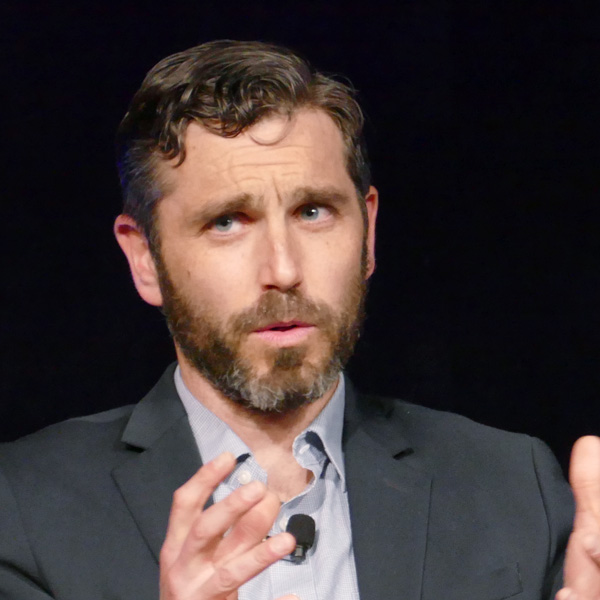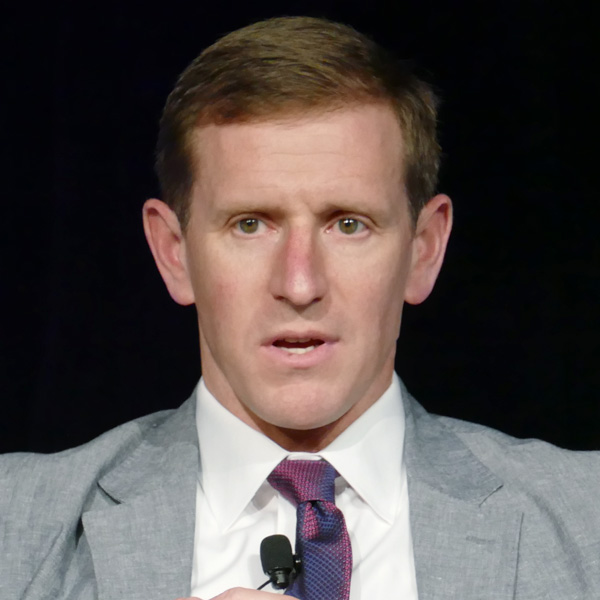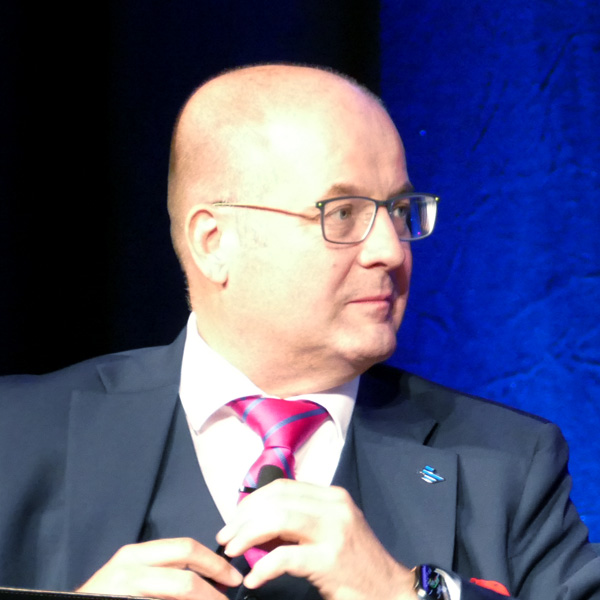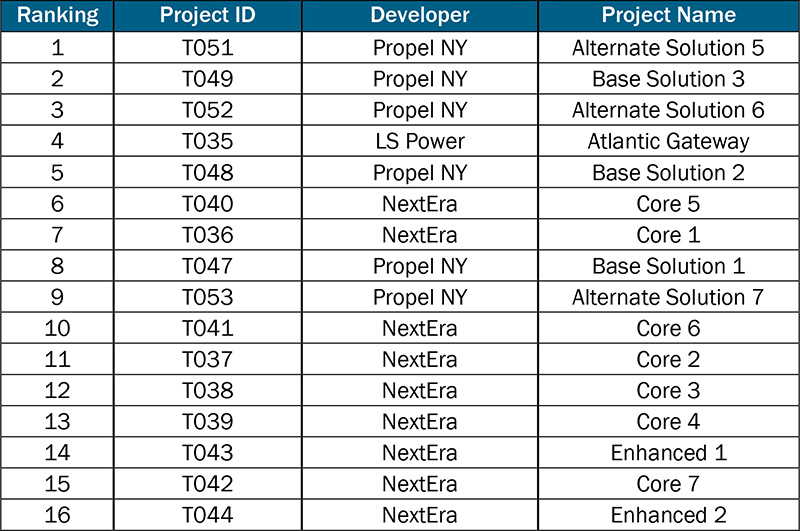ALBANY, N.Y. — There was no shortage of ideas on how to overcome the well known challenges to carrying out New York’s clean energy transition last week at the Independent Power Producers of New York’s 37th Spring Conference.
Much of the conference built on themes discussed last year, such as how to best implement New York’s climate legislation, the need to expand the grid without compromising reliability or hurting ratepayers, and that everyone needs to be involved in the transition. (See Overheard at IPPNY 2022 Spring Conference.)
Since New York passed the 2019 Climate Leadership and Community Protection Act (CLCPA), the state has set itself on an aggressive decarbonization timeline: 70% renewable electricity by 2030, 100% zero-emission electricity by 2040 and net-zero emissions statewide by 2050. The Climate Action Council (CAC) recently approved a Scoping Plan that laid out a roadmap for how New York can meet CLCPA goals. (See New York Climate Scoping Plan OK’d.)
These deadlines are fast approaching, and panelists agreed that New York needs to act quickly, but methodically. Many of New York’s fossil fuel plants are due to retire soon, and if the state has not installed enough reliable renewable capacity to replace that baseload generation, then those emissions-producing plants may need to stay online, which means that the state will not meet its objectives.
 Gavin Donohue, IPPNY | © RTO Insider LLC
Gavin Donohue, IPPNY | © RTO Insider LLC
IPPNY President Gavin Donohue opened the meeting saying, “The purpose of this conference is to work together to identify innovative technologies that are zero-emitting and, ultimately, are going to bolster both reliability and affordability.”
Common refrains heard during the conference were that New York needs to encourage more collaboration and be more open to innovative ideas or resources because this will better position the state to achieve its mandates.
Corinne DiDomenico, director of regulatory affairs at NextEra Energy Resources, said “the state has very discrete goals with very rigid timelines” and as those deadlines approach, “things start to get messy, and so with that in mind, we need flexibility to address incoming challenges.”
 Corinne DiDomenico, NextEra Energy Resources | © RTO Insider LLC
Corinne DiDomenico, NextEra Energy Resources | © RTO Insider LLC
The state’s grid currently has 37,520 MW of total installed capacity, according to NYISO, and about 70% of that capacity is fossil fuel, the majority of which are dual-fuel systems for downstate zones; many will retire soon.
NYISO’s 2022 Reliability Needs Assessment found that these retirements are leading to tightening transmission security and resource adequacy margins that could become deficient by 2025 if critical emissions-free projects — such as the Champlain Hudson Power Express, an immense transmission project to import hydroelectric power from Quebec to New York City — experience delays. (See Champlain Hudson Power Project Receives Landmark Delivery.)
New York is walking a tightrope between its lofty aspirations and reality on the ground.
“We need to be able to adapt to the changes we see every day because, as exemplified by COVID, markets need to be able to react and respond,” DiDomenico said. “The state also needs a lot more coordination to happen to address the world changing around us.”
A desire for flexibility was also seen in a panel about climate change, resilience and reliability during extreme weather events, where natural gas was seen as critical to meeting current energy needs, particularly during emergencies like the December winter storm.
 Chris Wentlent, New York State Reliability Council | © RTO Insider LLC
Chris Wentlent, New York State Reliability Council | © RTO Insider LLC
“We’ve had a surplus of fossil fuel resources, and that surplus not only offers flexibility and resiliency, but lets [NYISO] manage the grid as reliably as you see … and we don’t want to risk that,” said Aaron Markham, NYISO vice president of operations. “In New York there remain incentives to maintain dual-fuel capabilities because, particularly during high demands in the winter, we have to have fuel on site that can provide resiliency in case there is an emergency.”
The panel was supportive of renewable development but agreed that gas has a role in the transition.
“ISOs need be thoughtful about retiring [natural gas plants] too soon, because we don’t want to impact loads during the transition to a renewable future because we want to make sure we have sufficient resources available to meet resource adequacy needs,” Stephen George of ISO-NE said.
Chris Wentlent, chair of the New York State Reliability Council (NYSRC) Executive Committee, agreed. “Fortunately we went into this winter with a great fuel diversity that provided benefits when we started moving into the extremes for load,” he said.
 Bart Franey, National Grid | © RTO Insider LLC
Bart Franey, National Grid | © RTO Insider LLC
This flexibility and desire for New York to think more creatively was best expressed by William Acker, executive director of the New York Battery and Energy Storage Technology Consortium, and Bart Franey, vice president of clean energy development at National Grid, during a panel on “The Future of the Electric Grid.”
“There are a lot of tools in our toolbox that can optimize [New York’s] transition going forward,” Acker said.
New York “needs to think about different kinds of solutions and be more flexible, and not always be applying standard practices to its transition,” Franey added.
Flexibility was not the only thing on panelists’ minds, and frequently, they cited the need for greater cooperation.
Franey said the state “needs to do a better job coordinating land use very purposefully” and engage with communities directly because New York does not have vast tracts of land to install large-scale renewable projects.
This call for greater cooperation was most observable during the fireside chat between State Sen. Mario Mattera (R) and Assemblymember Didi Barrett (D).
Mattera, the ranking minority member on the Senate’s Energy and Telecommunications Committee, said that “when I’ve worked with developers, they always come up to me saying that we need to get the local community involved, that we need to have open forums, and we need to involve everyone, because when you don’t do that, that’s when you have problems.”
Barrett, chair of the Assembly’s Energy Committee, concurred. “We’re not going to get to our goals by bullying people, by shaming people, by calling people names or lying, so my goal is to make sure that we do bring all of our communities, all of our producers and all of our businesses together, since they are important to our decarbonization”
Some still expressed skepticism about New York accomplishing its near- to medium-term goals, though they thought it was not too late to learn from any early mistakes and change course.
“I think New York has an aggressive but appropriate climate agenda,” Franey said, but he added that “with regards to 2030 goals, we got caught flatfooted, and to make sure 2040’s goals become real, we need to start thinking about planning and infrastructure that will be needed to address affordability and reliability concerns.”
Public Service Commissioner Diane Burman, agreed, saying, “We have to be clear that our near-term opportunities are not necessarily all going to be a done deal and that there will be significant challenges. …
“This transition does have fundamental risks, and we need to be open and transparent about that and work through those challenges together to figure out solutions,” she added.
Doreen Harris, president of the New York State Energy Research and Development Authority (NYSERDA), was more optimistic, saying, “We each have a critical role to play in this effort, and I believe change is not easy, but it is realizable. …
“This mid-transition point will have some messy spots on the way,” she added, but “I believe we are coming together in ways that not only get us from here to there but make our state the better in doing so.”
Panelists offered specific recommendations about how New York could be more flexible in its approach or better coordinate the transition.
NYISO’s Markham called for greater interregional cooperation among the RTOs/ISOs, saying, “Coordination amongst all [our neighbors] and state agencies as new polices are developed is critical to ensure there is an ability in those polices to keep resources around for reliability if necessary, because, in my opinion, that will minimize disruptions.”
Wentlent cited the NYSRC’s recent creation of an Extreme Weather Working Group, which was tasked with understanding how the grid is impacted by increasingly frequent and devastating disasters.
“We, and NYISO, are only at the cusp of understanding these [extreme weather events],” he said. He advised that New York study how every resource is correlated and impacted by these events because “until we understand all these pieces, we’re just at the beginning.”
Franey recommended that NYISO “could gain a lot of interesting efficiencies if [they] integrate storage with transmission … and, in some cases, could become more economical and efficient.”
“We have to make sure that we can be creative in our transmission-distribution system buildout, and that means looking at other technologies and not just traditional transmission technologies, since we want to make this as cost-effective as possible,” he said.
More than One Way to Skin a Cat
For decades New York’s clean energy sector has been dominated by nuclear and hydroelectric power, yet they do not produce nearly enough energy to achieve CLCPA mandates, speakers said.
That emissions-free generation has been bolstered recently, particularly by wind, which will soon make up a large part of New York’s total energy production once offshore projects being planned along the coast are connected. But still more renewables are needed if CLCPA goals are to be met.
The state’s future success will also heavily rely on distributed energy resources and dispatchable emissions-free resources, both of which are nowhere near at scale to meet the energy demands being asked of them and, to many observers at the conference, have yet to be fully fleshed out.
In that context, many panelists called for a more inclusive approach to New York’s decarbonization.
Mattera was one of the most vocal, saying, “It seems like we’re not doing enough to consider other energy technologies,” citing the perceived lack of research into hydrogen, geothermal, carbon capture, storage or wastewater heating technologies.
Keynote speaker Alexis Glick, CEO of biomethane producer Nature Energy, called for greater usage of biofuels. She pointed to the EU as evidence for how there are many ways to reach net zero, noting how it was forced to think creatively about its transition after Russia’s invasion of Ukraine caused gas shortages and embrace renewable natural gas (RNG).
“RNG is seen as a key ingredient to [Europe’s] clean energy future,” Glick said. The union, via the RePowerEU program, has committed to annually produce 35 million cubic meters of biomethane to displace Russian gas by 2030. “I believe RNG needs to play a critical role in our energy transition to achieve our mutual goals,” she said.
New York currently uses 50 trillion BTU of RNG per year, according to an April 2022 report from NYSERDA, and bioenergy accounts for less than 2% of the state’s electric generation, according to the agency. Biofuels were one of the most contentious topics as the CAC was developing the Scoping Plan, as members disagreed on its environmental benefits and role in the transition. (See Natural Gas Debate Heats up Hearing on CAC Scoping Plan.)
The Scoping Plan would recognize these resources as ways to reduce state emissions, but it still faces stiff activist resistance, which is why hydrogen was also discussed during the conference and offered as alternative to fossil fuels.
During an industry fireside chat, panelists such as Tim Cortes, chief technology officer at Plug Power, which develops hydrogen fuel cell systems, noted that hydrogen can be an important piece to the transition puzzle.
“Because we are still in the early stages of this transition, it is critical that we not take any viable solutions that could decarbonize the economy off the table,” he said.
“In the long run, hydrogen gives us the ability to be part of the solution by lowering emissions while keeping generating facilities that would’ve been retired around for a longer period of time,” said Mark Sudbey, CEO of Eastern Generation.
Referencing the risks posed by the early retirement of many fossil fuels generators, Rudy Wynter, New York president of National Grid, said, “We’re going to need a lot of solutions to achieve our goals, and so we should keep an open mind to the many pathways to decarbonization. …
“Hydrogen can play a role in this transition, especially if you’re operating off natural gas distribution networks because it will help to decarbonize those fossil fuels,” he said. Furthermore, RNG and hydrogen “can help us decarbonize [natural gas] molecules, because let’s be clear, not everyone is going to be able to afford to electrify, and some customers may have a harder time finding alternative decarbonization fuels.”
There was some reluctance about hydrogen’s potential, however.
“I think it’s still pretty early to judge [hydrogen’s] effectiveness in New York,” Markham said, because the “the challenge is that, No. 1, we still need the infrastructure to support not only the production and transportation of hydrogen, but also the storage; and secondly, what will the cost of that hydrogen be? Because the costs vary wildly.”
Hydrogen’s fluctuating costs can be partially attributed to its many forms, where the price of blue hydrogen, which is produced from fossil fuels, and green hydrogen, which comes from the electrolysis of water to produce zero emissions, are dependent on the price of the resource that they are derived from.
More important, there is a hard push to develop technology to generate green hydrogen much more cheaply, and the degree to which it is successful will be a critical determinant of green hydrogen’s prospects for large-scale adoption as a fuel.
NYSERDA’s Harris, however, cited hydrogen as an example of the collaboration the transition can create, referring to the seven-state Northeast Regional Clean Hydrogen Hub that was led by New York but pooled everyone’s expertise. (See Vermont Joins Northeast Clean Hydrogen Hub.)
“I believe we put together not only a winning proposal, but one in which we can continue to think about this resource and the ways it can help us achieve decarbonization,” she said.
“We have to catch our breath and recognize that we’re all in this together,” Commissioner Burman concluded. “We need to keep focused on what can be helpful as we move forward and how do we accomplish our transition in a way that is helpful, and not just rip off the Band-Aid saying, ‘We got this,’ because we may not, and we cannot risk reliability, affordability or safety.”
